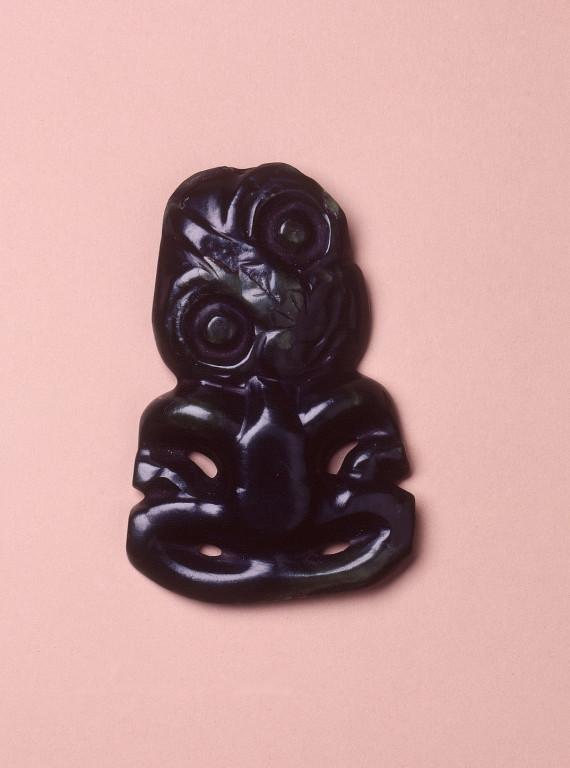
Courtesy of National Museums Liverpool, World Museum Liverpool
Information
This 'hei tiki' pendant is carved from greenstone or nephrite jade called 'pounamu' in Maori. The stylized human figure is represented squatting, with its head resting on its right shoulder. The top of the head is broken at the back and smoothed off, and a hole has been drilled part way through at the back. There are flat facets and a groove along the back of the figure's right side, and a flat facet at the bottom back.
The word 'hei' means 'suspended'. 'Tiki' probably refers to the first human created by Tāne, the Maori god of the forest. The figure may also represent an ancestor or an unborn foetus and as such it is often seen as a symbol of remembrance or fertility. 'Hei tiki' are worn as neck pendants by both men and women and passed down in families as heirlooms. They are probably the first artefacts Maori made specifically for exchange with Europeans.
Specifications
- Accession number
- 56.25.776
- Collection type
- Personal Ornament
- Culture
- Maori
- Place made
- Oceania: Polynesia: New Zealand: North Island: Northland
- Date made
- 1861 before
- Collector
- Mrs Barker
- Place collected
- Not recorded
- Date collected
- 1861 before
- Materials
- Nephrite; Polished; Drilled; Sawn; Ground
- Measurements
- 7.0 x 1.5 x 10.5 cm
- Note
- Attribution: Canterbury (Chris Jacomb, March 1994).
- Credit line
- Purchased from Norwich Castle Museum, 1956
- Legal status
- Permanent collection
- Provenance
- Location
- On display: World Museum, Level 3, World Cultures
